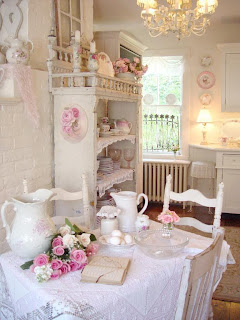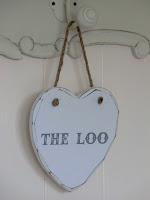I remember years ago there was always a big elderflower tree in our garden. There are actually loads of them scattered around my Fathers farm and on the roadsides but I always remember this one in particular. And I remember being told by my Mother about Elder trees and how the flowers and the berries (berries follow later in the year) could be used to make drinks and jams.......I dont think I ever tasted elderberry jam or remember it being made....probably because my Mother was so busy making Rhubarb & Ginger jam, which we had an abundance of...and other fruits such as blackcurrants and apples.
I was curious about elderflower cordial so I looked up a recipe and headed home on Monday evening to pick myself a bag of elderflowers. And what a lovely way to spend a couple of hours on a summers evening. There are masses of elderflower out at this time of year so I had no problem filling a bag.
I found the following recipe on the
Slow Food Ireland website, which is taken from Hugh Fearnley Whittingstalls 'The River Cottage' cookbook
20-30 freshly picked heads of Elderflower,
Just boiled water
Zest of 2 Lemons and 1 Orange,
200ml or freshly squeezed lemon juice and up to 1.5kg Caster Sugar
Other equipment needed.
Bowl, grater, large saucepan, meauring jug, muslin cloth, bottles
Method:

Shake off any insects and place the flowers in the bowl with the zest, and pour over enough just boiled water to cover them completely
I ended up with 3 bowls of approx 30 elderflower heads in each bowl
Elderflowers and zest of lemons and orange covered with water.

I left these overnight and strained all into a large saucepan using a muslin cloth (got this from local drapery at €3 per/yd)
Place your saucepan over the heat and for every 500ml of liquid add 350g of caster sugar and 50ml of fresh lemon juice
Slowly heat the liquid allowing the sugar to dissolve.
Let it simmer for a short while and remove any scum that collects at the top.
Remove from the heat and allow to cool enough to strain again and then transfer to your bottles.
I transfered it to my
vintage style swing top bottles as I will be giving it as presents but you can also place in plastic bottles and freeze. If using glass bottles, wash them out and place in a hot over to sterilise. Your cordial will last longer.
AND VOILA!! THE FINISHED PRODUCT!!
Serve approx 1 part cordial to 5/6 parts sparkling water. You can also use still water but I prefer sparkling. This is a lovely refreshing and healty drink with no colours, preservatives or additives. What more could you ask for and its so simple to make. I ended up with 6 litres so we'll be drinking it for a while. Please feel free to ask me any questions on making it. I would also love to hear from anyone who has made it before. I'm very happy with how it turned out but there's always room for improvement so all tips welcome.
If your looking for bottles to store your cordial, I have a selection of swing top
vintage style bottles on my website for sale. Check them out
here
Some interesting health benefits of Elderflower Cordial
Nearly all herbal books refer to the elder as “the medicine chest of the country folk”. Amongst the claims found in a number of herbal and historical references (refer to any herbal history/encyclopaedia) are the following:
- Traditionally used as a de-tox, to build the immune system by clearing toxins thru the lymph glands.
- For respiratory problems, elderflower was used to treat asthmatics in the days before “modern” medication; and as an expectorant to clear catarrh.
- To build up “poorly” people (especially children and the elderly) before winter – as coughs and colds and influenza were killers through a cold European winter.
- In spring, elderflower concentrate, also known as elderflower cordial, was used to relieve the symptoms of allergies to pollens etc; to reduce the effects of sinusitis.
- Elderflower tea was used as a blood purifier; and as a tonic or ointment to fade freckles or skin blemishes. Many modern skin tonics still contain elderflowers.



























































